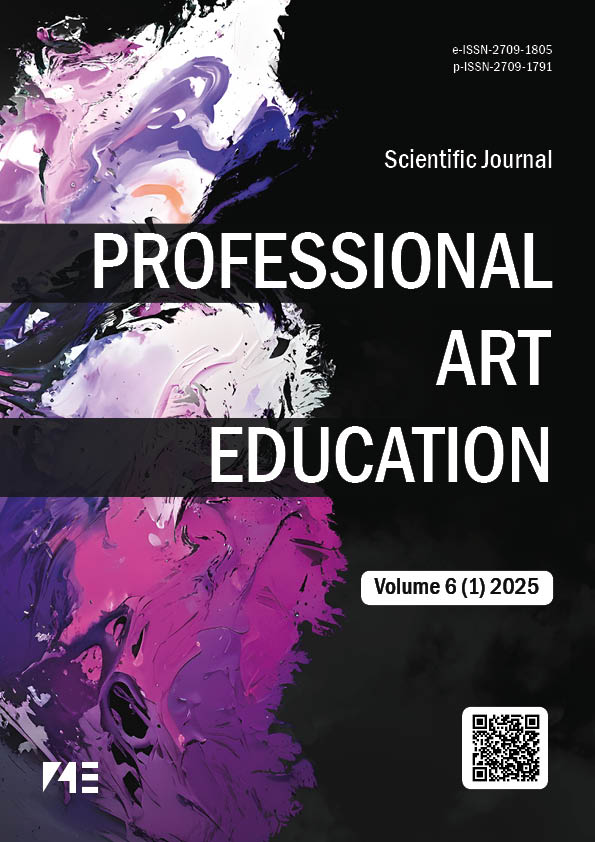Sound and color synesthesia: impressionism in the music of Claude Debussy and its relationship with painting
DOI:
https://doi.org/10.34142/27091805.2025.6.01.04Keywords:
impressionist painting, impressionist music, gamelan, feeling, imageryAbstract
Object: the connection between Claude Debussy’s musical creativity and impressionism in painting.
Results: In the late 19th century, Impressionism emerged as a new movement and the art movement reached a turning point. The Impressionist painting style, a conscious reaction to the over expressionism of the late Romanticism centered in Germany, rejected all existing traditional styles and forms. The movement sought to express sensual nuances through the immediate effects of color or tone and to describe objects, nature, light, etc. Claude Debussy was an important composer of French Impressionism. In the late 19th century, he started the French Impressionist music movement by bringing Impressionism to music. He is called an Impressionist musician because he composed music that combined images with soft tones, sounds, vague compositions and free choice of themes, bringing the Impressionist art form to music. He was introduced to the music of Vietnam, Cambodia and Java, including Javanese gamelan, at the World Exhibition in Paris in 1889. Although he did not visit each of these countries, he sublimated the musical elements of each country into his music and was able to clearly express the oriental flavor and exotic atmosphere of his music. He mainly used the gamelan music of Java as a source of inspiration for his music, and the titles or indications hinted at exoticism and its combination with impressionism. He managed to convey exotic imagery through the use of stylistic freedom, fresh rhythms, musical percussion effects, oriental melodies and folk elements such as traditional rhythms, instruments and modes. Debussy expressed images with the use of symbols, presenting images not through direct imitation but through symbolism. Through these methods, he transformed the senses into impressive arts. These processes were acquired through individual experience and generalize their embodied values as sensory experience and extension of expression. The connection between Debussy’s music and the visual arts is more obvious given his familiarity with Eastern painting, which, in contrast, does not strive for realism, an almost photographic reproduction of an object, but rather aims to convey the feeling, the impression of a visual image.
Conclusions. This study examines gamelan music, which, among other exotic elements, inspired Debussy and is found in his piano works, and analyzes how he presented and combined these elements in his music.
Downloads
References
Bag Sug-lyeon. (1997). 20segi piano eumag, eumag chunchusa [20th Century Piano Music], Music Chunchusa. 288 p. [in Korean]
Clemenceau, G. (1990). Claude Monet. Les Nymphéas. Terrain Vague. Belgique. 122 p. https://www.musee-orangerie.fr/sites/default/files/2023-03/dossier_pedagogique_nympheas_0.pdf [in English]
Gang Ji-hye. (2013). Bwisiui piano jagpume natanani gugjeogyo soegwan hanyeongu. Sahagwi nonmun [A Study of National Elements in de Bussy's Piano Works. Master's Thesis]. Jeju daehaggyo ilban daehagwon piano jeongong. 55 peiji [in Korean]
Gim Eun-su. (2023). Chehwadoen gachiloseoui Deubwisi eumagui gong-gamgagjeog simsang. Gugmin daehaggyo yesul daehag. 69 peiji [Synesthetic Imagery in Debussy's Music as Embodied Value. Kookmin University College of Arts] [in Korean]
Gim Ju-won. (2015). Deubwisiui eumagbipyeong yeongu. Seoul daehaggyo seoyang eumag yeonguso eumagilon yeongu je25gwon [A Study on Debussy's Music Criticism]. (36-73) 38 [in Korean]
Gim Nan-hui. (1989). Deubwisiui piano jagpumgwa yeonju haeseog. Eumag chunchusa [Debussy's piano works and performance interpretation]. Music Chunchusa. 234 p. [in Korean]
Jankelevitch, V. (1989). Debussy et le mystère de l'instant. Plon. Paris. 320 p. https://www.vrin.fr/livre/9782259276528/debussy-et-le-mystere-de-l-instant [in France]
Jarocinsky, S. (1970). Debussy. Impressionnisme et symbolisme. Seuil. Paris. 200 p. https://www.amazon.fr/Debussy-impressionnisme-symbolisme-Jarocinski-Stefan/dp/2020020572 [in France]
Lockspeiser, E. (1980). Claude Debussy. Fayard. Paris. 832 p. https://www.fayard.fr/livre/claude-debussy-9782213009216/ [in English]
Makis, S. (1994). Elements pour une comparaison entre Debussy et Monet. HAL open science. hal-02055207. https://hal.science/hal-02055207/document [in English]
Top Ten movies that use Clair de Lune. Falcon at the movies. https://falconmovies.wordpress.com/2019/05/29/top-ten-moves-that-use-clair-de-lune/ [in English]
Vallas, L. (1958). Claude Debussy et son temps. Paris. Albin-Michel. 356 p. [in English]
Published
License
Copyright (c) 2025 Кім Олександр, Корчагіна Ганна (Автор)

This work is licensed under a Creative Commons Attribution-NonCommercial 4.0 International License.














